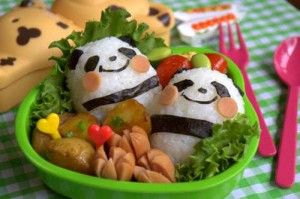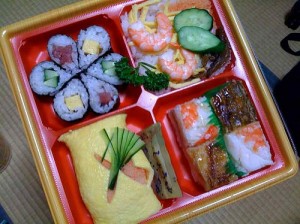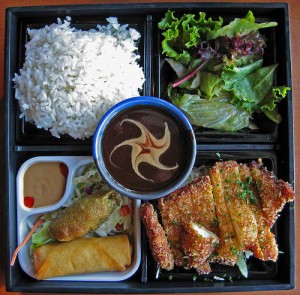Photo Courtesy Of: miheco
A bento�is a single serve portioned meal common in Japanese cuisine. This boxed meal can either be served in restaurants or eaten on the go as homemade packed lunches. The concept has many variations all over the world. Similar forms include biandang (Taiwan), dosirak (Korea), baon (Philippines) and tiffin (India).
History of the Bento
Bento
boxes were originally served during a hanami or tea party. Later on it became common to bring food during travels or while sightseeing. Since concessionaires were not common then, people who came to see kabuki or other shows ate their bento boxes during intermissions. Through the years it evolved as a take away meal that adults and children took with them for lunch and during picnics or day trips. These delicious meals are often cooked at home, but they have been sold commercially since the late 1800�s.
Bento bako or the lunchbox itself was initially made of woven bamboo leaves and then
it evolved to wooden boxes. During the Taisho period (1912-1926), aluminum bento boxes were used because they were more sturdy and reusable. Nowadays, lacquer bento boxes are used for special gatherings and in restaurants, while plastic ones are used on a daily basis. Disposable bento boxes are also sold commercially.

Photo Courtesy Of: �leafar.
Types of bento
Makunuochi bento is a bento meal served for formal meals and in restaurants.
Kouraku bento is for sharing and it is also known as a picnic bento.
Ekiben bento is for travelers and is often sold in food halls, train stations and convenience stores.
Charaben or kyaraben is the art of making �character bento� which often resembles anime or cartoon characters.
The Japanese follow two traditions in preparing food
Goho meaning five ways of cooking -boiling, grilling, pickling, frying, simmering or steaming gives further balance to every meal.
Goshiki �means five colors �white, red/orange, green, yellow, black/purple/brown. It is a Japanese Buddhist thought that balances aesthetics and nutrition in every meal.

Photo Courtesy Of: kimubert
How to assemble a bento box
The traditional bento box ratio is 4-3-2-1. Four parts contains carbohydrates such as rice or noodles, three parts protein such as meat or fish, 2 parts vegetables for fiber and vitamins and one part dessert such as fruits or baked goods for a daily source of sugar.
Why bento?
Bento boxes are healthier options since food is portioned according to your daily needs. This can vary or change though, depending on one�s diet. It is also earth friendly because food is served in reusable containers, thus reducing waste from plastic and paper bags or other forms of disposable packaging. Going bento does not necessarily mean eating Japanese food. These healthy lunchboxes can also contain sandwiches or dishes from other cuisines. �So if you are tired of your usual boring lunch, be creative and make a bento box today.
